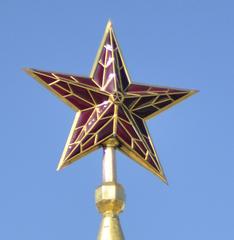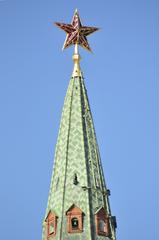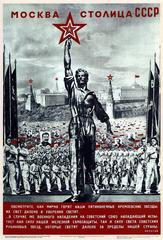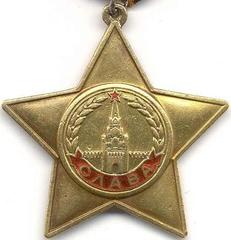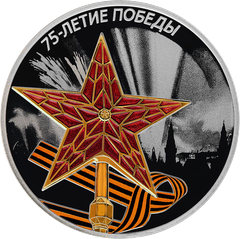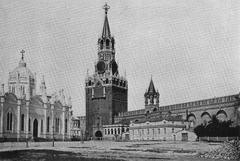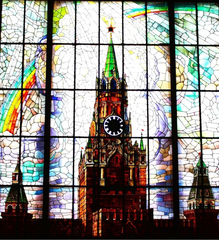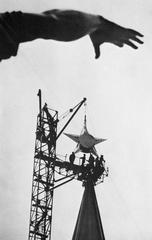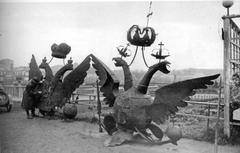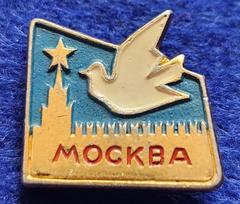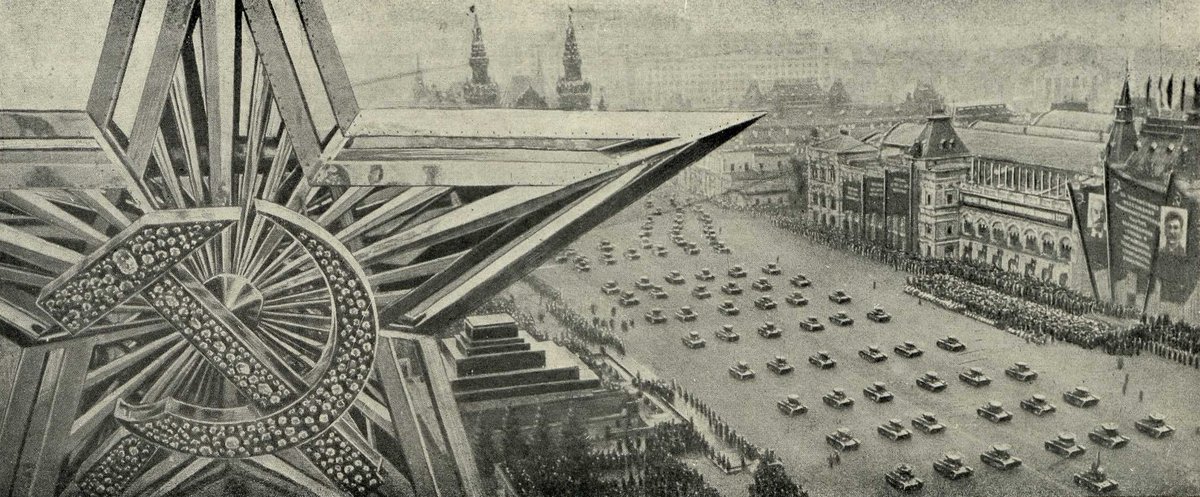
The Kremlin Stars of Moscow: Visiting Hours, Tickets, and Historical Significance
Date: 15/06/2025
Introduction
The Kremlin Stars, crowning the five principal towers of Moscow’s Kremlin, are among the city’s most instantly recognizable landmarks. Glowing with a vivid ruby-red hue, they not only light up Moscow’s iconic skyline but also serve as enduring symbols of Russia’s political evolution, engineering prowess, and cultural identity. This comprehensive guide details everything visitors need to know about the Kremlin Stars—their compelling history, technical marvels, visiting logistics, and their place in Russian society today.
Historical Evolution and Symbolism
From Imperial Eagles to Soviet Stars
Prior to the Bolshevik Revolution of 1917, the Kremlin towers were topped with gilded double-headed eagles—the insignia of imperial Russia. In the 1930s, these were replaced with five-pointed stars to reflect the new Soviet ideology and to mark a decisive symbolic break with the imperial past. The first stars, designed by Fyodor Fedorovsky, were installed in 1935 but proved unsuitable for Moscow’s climate and architectural context (Wikipedia; Interesting Engineering).
The Ruby Glass Stars (1937–Present)
In 1937, to commemorate the 20th anniversary of the October Revolution, the current stars were unveiled—crafted from durable ruby glass using advanced technology. These stars, installed on the Spasskaya, Troitskaya, Nikolskaya, Borovitskaya, and Vodovzvodnaya towers, became lasting emblems of Soviet—and later Russian—statehood. Their ruby-red glow, visible day and night, is a potent symbol of unity, resilience, and the city’s revolutionary past (Wikipedia; Moscow.Info).
Design, Engineering, and Illumination
Each Kremlin Star is a feat of engineering: weighing about one ton, standing over three meters across, and built from stainless steel and copper. The stars are mounted on special bearings, allowing them to rotate with the wind and maintain their position. Internally, powerful lamps illuminate the ruby glass, ensuring visibility from across the city. The lighting system is autonomous, with backup features to ensure the stars remain lit even during electrical faults (ief-usfeu.ru).
The stars’ design integrates seamlessly with the Kremlin’s centuries-old architecture, offering a striking contrast between medieval towers and modernist Soviet symbolism (Interesting Engineering).
Preservation, Restoration, and Maintenance
Historical Restoration
Since their installation, the Kremlin Stars have undergone significant restoration—especially after World War II, when they were covered to protect against air raids but still suffered some damage. Post-war restorations introduced multi-layered glazing to enhance durability and brilliance. The stars are now recognized as part of the Kremlin’s UNESCO World Heritage status, ensuring international standards in their preservation (ermakvagus.com).
Ongoing Maintenance
- Routine Cleaning: Industrial climbers clean the stars every five years; visual inspections occur twice daily.
- Electrical Systems: Special high-wattage lamps illuminate the stars; a unique ventilation system prevents overheating.
- Structural Bearings: Rotating mechanisms allow the stars to face the wind, reducing mechanical stress.
- Emergency Repairs: Weather events (such as lightning) have occasionally damaged the glass, necessitating quick, historically accurate repairs (ief-usfeu.ru).
Modern Symbolism and Debate
Soviet Legacy and National Identity
The Kremlin Stars are more than architectural details; they remain powerful emblems of Moscow’s political journey. While many Soviet symbols were removed after 1991, the stars were kept atop the towers, testifying to their integration into Russia’s identity. They feature in national celebrations, popular culture, and even on the Russian passport (Radio Free Europe/Radio Liberty; ermakvagus.com).
Ongoing Debate
Calls to restore the pre-revolutionary eagles have periodically surfaced, but the stars continue to shine—representing both a contested legacy and the enduring spirit of Moscow (ief-usfeu.ru).
Cultural Impact
The stars have appeared in films, art, and literature, often as symbols of progress, resilience, or political transformation. Special events, such as national holidays, sometimes feature light shows and commemorations centered around the stars (Moscow.Info).
Visiting the Kremlin Stars: Tickets, Hours, and Access
Kremlin Visiting Hours
- General Hours: 10:00 AM to 6:00 PM, Tuesday through Sunday. Closed Mondays and certain public holidays.
- Museum Hours: Some museums within the complex may have different schedules. Always verify before visiting (Official Kremlin Website).
Tickets
- Standard Entry: 700–1,000 RUB for adults; discounts for children and students. Tickets can be purchased online or at the Kutafya Tower ticket office.
- Cathedral Square, Armoury Chamber, and other exhibitions require separate tickets.
- Advance Booking: Strongly advised, especially during peak tourist seasons.
Accessibility
- The Kremlin grounds are largely accessible, with ramps and assistance available. Some cobblestone areas or steps may present minor challenges.
Security and Visitor Tips
- Mandatory security checks at entrances.
- Large bags must be checked.
- Drones and professional equipment require special permits.
- Photography is allowed in most outdoor areas, but tripods may be restricted.
Best Viewing Spots and Photography Tips
Viewing Points
- Red Square: Classic frontal views of the Spasskaya Tower star.
- Alexander Garden: Great for Borovitskaya and Troitskaya stars.
- Zaryadye Park: Offers panoramic skyline shots.
- Bolshoy Moskvoretsky Bridge: Ideal for capturing several stars in one frame.
Photography Advice
- Equipment: Telephoto lenses (70–200mm) for close-ups; wide-angle (16–35mm) for broader views.
- Lighting: Early morning and dusk—“golden hour”—provide warm natural light; after sunset, capture the illuminated stars with a tripod and long exposures.
- Season: Winter’s snow creates a magical contrast; spring and autumn offer clear skies and fewer crowds.
Nearby Attractions
- Red Square: The city’s most famous plaza, adjacent to the Kremlin.
- Saint Basil’s Cathedral: Iconic onion domes just steps from the Kremlin walls.
- Alexander Garden: Serene green space along the Kremlin’s western perimeter.
- State Historical Museum: Rich exhibits on Russian history.
- Zaryadye Park: Modern park with unique views of the Kremlin.
Guided Tours and Special Events
- Guided Tours: Many tours include historical background on the Kremlin Stars and the towers. Look for English-language options for deeper insight (Mundo Maya Travel).
- Special Events: Access may be restricted during national holidays, parades, or major state events. Check the official website before planning your visit.
Frequently Asked Questions (FAQ)
Can visitors climb the towers to see the stars up close?
No, the towers are not open to the public. The stars are best admired from ground-level vantage points.
Where can I buy tickets?
Purchase tickets online via the official Kremlin website or at the ticket office near the Kutafya Tower.
Are guided tours available?
Yes, both group and private tours are available and often cover the stars’ history.
What are the best times for photography?
Golden hour (shortly after sunrise or before sunset) and after dark for illuminated shots.
Is the Kremlin accessible for visitors with disabilities?
Most main areas are accessible, though some uneven surfaces exist.
Visual and Interactive Content
- Images: Look for high-quality photos of the illuminated stars at night or sparkling in the sun.
- Alt Text: Use descriptions like “Ruby-red Kremlin Star atop Spasskaya Tower at dusk” for accessibility and SEO.
- Interactive Maps: Utilize digital maps to plan your viewing route.
- Virtual Tours: Explore the Kremlin complex online before your visit.
Summary and Visitor Recommendations
The Kremlin Stars are more than architectural ornaments—they are luminous markers of Russia’s turbulent history, engineering achievement, and cultural legacy. Although access is restricted, the stars can be enjoyed from many vantage points around the Kremlin and Red Square. By planning your visit carefully—booking tickets in advance, choosing optimal viewing times, and considering a guided tour—you can fully appreciate these radiant icons. Don’t forget to explore neighboring attractions and leverage interactive resources for a richer experience (Wikipedia; ief-usfeu.ru; Radio Free Europe/Radio Liberty; Moscow.Info).
Plan Your Visit and Explore More
Ready to explore the Kremlin Stars? Download the Audiala app for up-to-date visitor information, guided tours, and exclusive content. Follow us on social media for the latest updates and additional travel inspiration. Let the Kremlin Stars illuminate your understanding of Moscow’s history and grandeur!
Sources and Further Reading
- Kremlin Stars, 2023, Wikipedia
- Design and History of the Kremlin Stars, 2021, Interesting Engineering
- Kremlin Towers and Stars, 2024, Moscow.Info
- Moscow Travel Guide, 2024, Mundo Maya Travel
- Kremlin Stars Preservation and Maintenance, 2023, ief-usfeu.ru
- Vodovzvodnaya Tower and Kremlin Stars, 2022, Ermak Vagus
- The Story of the Red Ruby Stars of Russia’s Kremlin, 2018, Radio Free Europe/Radio Liberty
- Official Kremlin Website, 2025

